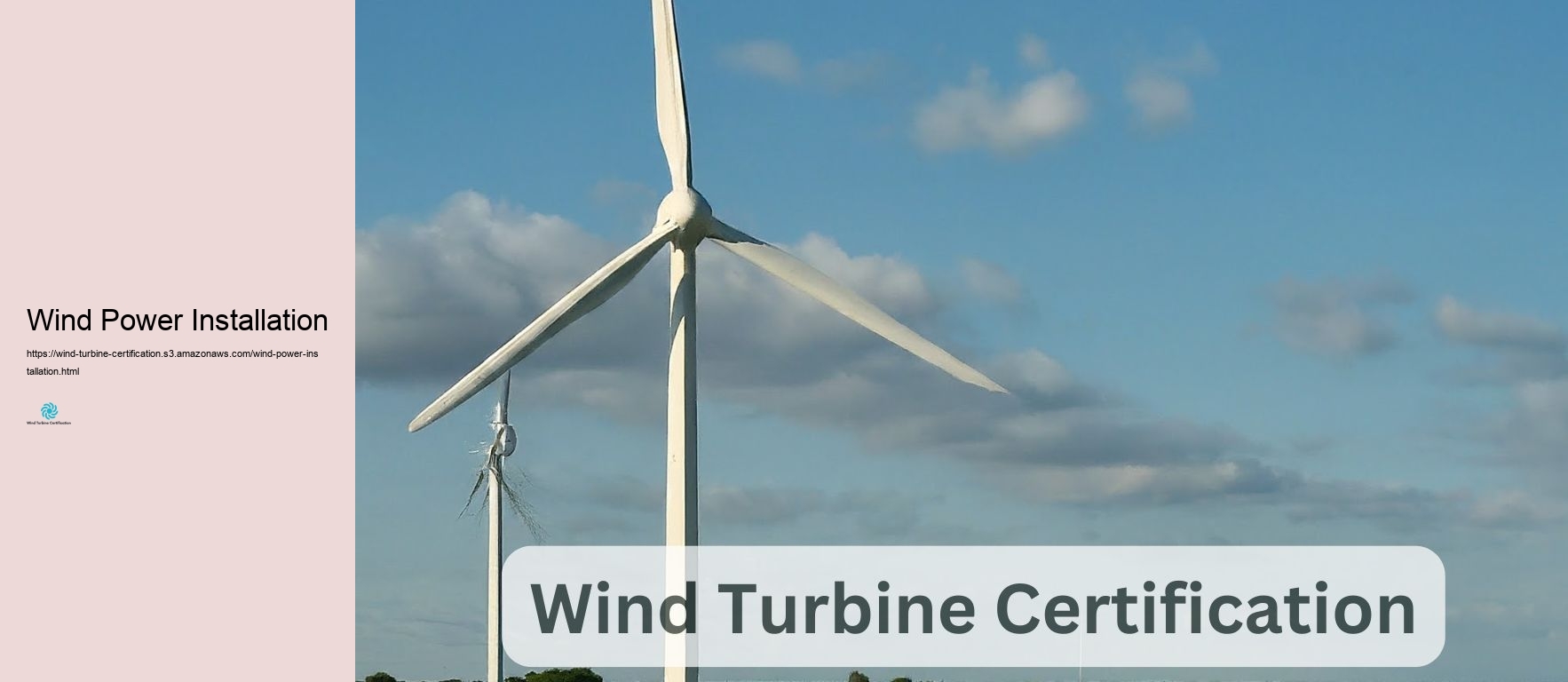

Wind turbine certification is a crucial treatment in the wind energy sector that guarantees wind turbines accomplish details standards for security, effectiveness, and stability. This substantial certification process involves laborious evaluating and evaluation of wind turbine styles, parts, and producing treatments to validate conformity with around the world requirements and legislations. The main function of wind turbine certification is to offer warranty to stakeholders, containing job developers, financiers, and governing bodies, that a certain wind turbine style appropriates for its wanted usage and can sustain the ecological problems it will definitely face throughout its functional lifetime. Certification aids in decreasing dangers connected with wind power jobs and markets the overall high quality and dependability of wind turbine modern technology. There are numerous type of wind turbine qualifications, with kind certification being one of one of the most typical and complete. Kind certification confirms that a specific wind turbine variation is created, manufactured, and analyzed according to relevant demands and standards. This process normally consists of a number of evaluation modules, such as design basis examination, wind turbine design evaluation, kind evaluating, making evaluation, and last examination. The design basis analysis analyzes the environmental and operational conditions under which the wind turbine is prepared for to operate. This includes components such as wind rates, disturbance, temperature level selections, and numerous other site-specific issues. The wind turbine design evaluation has a look at the turbine's building, mechanical, and electric elements to assurance they satisfy the called for requirements and can stand up versus the expected tons and stress and anxieties. Type screening is a crucial component of the certification procedure, involving physical examinations on a model or manufacturing device of the wind turbine. These tests examine different elements of the turbine's effectiveness, consisting of power result, sound exhausts, and safety and security functions. Load measurements are additionally performed to validate the precision of the design estimates and simulations. The production analysis makes sure that the production treatments and quality control measures are adequate to continuously produce wind generators that fulfill the certified style specifications. This might entail making facility examinations and audits of the supplier quality management system. Along with kind certification, part certification is likewise available for significant wind turbine components such as blades, transmissions, and generators. Aspect certification follows a comparable procedure to kind certification yet focuses on certain components rather than the entire turbine system. For little wind generators, which are typically utilized in dispersed generation applications, certification procedures might be a little different however still objective to confirm performance, security, and sturdiness. Little wind turbine certification typically includes evaluating to specific criteria produced for smaller sized systems, such as those comprehensive by the International Electrotechnical Payment(IEC)or national requirements organizations. Wind ranch certification is one more essential component of the wind power market, especially for big tasks. This process examines the whole wind cattle ranch, consisting of the web site problems, turbine feasibility for the details area, assistance structures, and electrical systems. Wind farm certification aids make certain that the project in its totality meets security and performance needs and can be especially crucial for offshore wind cattle ranches, which take care of one-of-a-kind obstacles as a result of their aquatic setting. Certification bodies play a crucial feature in the wind turbine certification process. These companies are generally approved by nationwide or global authorities to carry out certification tasks. Extensively recognized certification bodies in the wind power market include DNV GL, TÜV SÜD, and ClassNK, to name a few. These firms use experts in different areas connected with wind power innovation to carry out comprehensive analyses and assessments. The criteria used for wind turbine certification are mainly developed by globally companies such as the International Electrotechnical Settlement (IEC)and the International Company for Standardization(ISO). The IEC 61400 series of criteria is specifically important for wind turbine certification, covering various facets of wind turbine design, screening, and treatment. It's crucial to note that wind turbine certification requirements can vary between countries and locations. While global requirements provide a regular framework, some countries could have included or certain demands that call for to be satisfied. As an example, in the USA, compliance with criteria set by Underwriters Laboratories (UL) could be crucial for certain electrical elements of wind generators. The certification treatment can be taxing and expensive, however it deals substantial benefits to makers and the market general. Licensed wind generators are most likely to be authorized by job programmers and enrollers, as certification declines the related to risk related to the technology. Moreover, certification can aid makers identify and attend to potential troubles early in the advancement treatment, potentially conserving prices over time. Wind Power Installation As wind turbine modern-day innovation remains to breakthrough, with larger wind turbines and more advanced styles being established, certification procedures need to similarly adjust. This includes developing new screening approaches and upgrading standards to address arising innovations such as floating offshore wind wind turbines. Wind turbine certification is a detailed and vital procedure in the wind energy market. It ensures that wind turbines accomplish high demands of safety and security and security, performance, and stability, therefore
maintaining the development and track record of wind power as a crucial component of the global renewable resource mix. By supplying a standard framework for examining wind turbine modern technology, certification helps construct positive self-image amongst stakeholders and contributes to the general success and sustainability of wind power tasks worldwide.
Acquiring wind turbine certification is a considerable process created to assurance that wind generators meet particular needs and guidelines, ensuring their safety and security and security, effectiveness, and stability. This comprehensive guide defines the essential demands for getting wind turbine certification, highlighting the worth of each activity in the procedure. Kind certification is an essential requirement for wind wind turbines, validating that they are made, made, and examined to follow specific needs or criteria. This component evaluates the design presumptions and needs made use of in developing the wind turbine. It ensures that the format is based upon sound engineering principles and satisfies the needed requirements. This step reviews the in-depth layout of the wind turbine, including its mechanical, electrical, and control systems. It verifies that the layout fulfills the technical demands and market demands. Kind screening entails performing physical tests on the wind turbine to verify its performance and safety and security under numerous operating problems. This includes screening for architectural sincerity, electric efficiency, and noise levels. This component assesses the production treatment to ensure that it abides by the approved format paperwork. It includes assessments of the production center and quality control treatments. The last analysis clears up all previous evaluations to verify that the wind turbine satisfies all certification requirements. This phase entails an extensive review of all papers and examination results. Optional analysis components might consist of structure layout examination, structure making evaluation, and kind top qualities dimensions. These extra assessments offer extra guarantee of the turbine's performance and safety and security. Component certification is equally important, as it confirms that substantial components of a wind turbine, such as blades or main transmissions, fulfill details requirements and technical needs. The treatment for component certification. Turbine certification often abides by worldwide requirements such as IEC 61400-22 and IEC 61400-1. These requirements provide a structure for making certain that wind wind turbines are made and inspected to satisfy worldwide safety and performance requirements. Conformity with these criteria is essential for acquiring certification and ensuring market acceptance. Certification bodies should be approved by acknowledged certification bodies like DAkkS. This accreditation assurances that the certification treatment is clear, expert, and complies with globally requirements. Visibility in the certification procedure is vital for protecting depend on amongst stakeholders, including manufacturers, capitalists, and consumers. To take care of rates successfully, certification bodies supply feedback records that introduction makers with the entire procedure. These records aid determine prospective concerns at a beginning, conserving time and resources by staying free from pricey rework or redesigns. Clear interaction and defined checkpoints ensure that the certification procedure keeps effective and cost-effective.
Empower your wind energy projects with certified wind turbines! 🌍💨 Our comprehensive certification ensures top-notch safety, performance, and reliability, helping you build a sustainable future with confidence.https://t.co/Xa7LZ7nRLC
— Turbine Training And Operation (@turbinetraine) August 20, 2024
Wind turbine certification plays a crucial task in the renewable energy market, supplying assurance of safety and security and safety, effectiveness, and dependability for wind power jobs worldwide. As the global need for tidy power continues to increase, certification has become an important procedure that advantages vendors, developers, plutocrats, and clients alike. At its core, wind turbine certification is a comprehensive examination procedure that verifies that a turbine layout satisfies specific criteria and demands. This process usually includes design evaluation, type screening, making analysis, and last evaluation. By getting certification, wind turbine distributors show that their items have experienced laborious testing and comply with worldwide standards, such as those well established by the International Electrotechnical Repayment (IEC). Among the essential benefits of wind turbine certification is the enhancement of safety and security and protection. Licensed wind turbines have in fact been totally analyzed for building stability, electrical systems, and control systems, ensuring that they can stand up against numerous ecological troubles and operate safely throughout their life-span. This concentrate on safety and security not only protects employees and nearby locations yet likewise aids to create public depend on wind power technology. Certification furthermore plays an essential function in efficiency confirmation. Through standard testing treatments, accredited turbines supply credible details on power result, efficiency, and power making. This info is crucial for job designers and capitalists, permitting them to make educated choices and exact projections regarding the monetary viability of wind power projects. Qualified performance data in addition assists in shielding moneying, as lending institutions and investors have higher positive self-image in the stability of certified generators. For manufacturers, certification offers an inexpensive benefit in the global marketplace. As the wind power sector comes to be considerably international, having recognized items authorizations producers to go into new markets a whole lot even more conveniently. Many countries and areas requirement certification as a requirement for turbine installment or to get approved for benefits and subsidies. By acquiring certification, producers program their commitment to top quality and conformity with worldwide standards, which can be a substantial factor in winning contracts and increasing market share. The certification process furthermore drives technology and continuous renovation in wind turbine innovation. As manufacturers job to satisfy and go beyond certification needs, they generally develop brand-new innovations and fine-tune existing designs. This continuous development causes a great deal more reputable, trustworthy, and cost-effective wind generators, undoubtedly profiting the entire renewable resource industry. Certification includes in the general dependability and longevity of wind power jobs. Certified wind generators have actually gone through extensive screening for durability and efficiency under various conditions, which equates to minimized downtime and maintenance expenditures over the life of the job. This enhanced integrity is especially necessary for offshore wind cattle ranches, where repair and maintenance can be testing and expensive. From an environmental point of view, wind turbine certification assists make certain that renewable energy jobs are genuinely lasting. Licensed wind turbines are assessed for their environmental influence, consisting of sound exhausts and results on wild pets. This evaluation aids in minimizing possible negative impacts and markets liable development of wind power resources. For job programmers and drivers, certification enhances the procedure of turbine alternative and work planning. The standard strategy to certification suggests that designers can additional conveniently comparison various turbine variations and make notified choices based upon validated data. This enhances the development treatment and decreases the hazard of selecting underperforming or improper generators for particular job sites. Financiers and financial institutions furthermore advantage substantially from wind turbine certification. The certification procedure offers a degree of due persistance that helps reduce monetary investment danger. Licensed wind turbines are more possible to perform as anticipated, which increases the chance of jobs satisfying their monetary targets. This minimized threat can bring about a lot more useful financing terms and increased financier self-confidence in wind power tasks. Certification also adds in regulative conformity and plan development. Lots of federal governments and regulative bodies rely on certification requirements when creating plans and rewards for renewable energy.
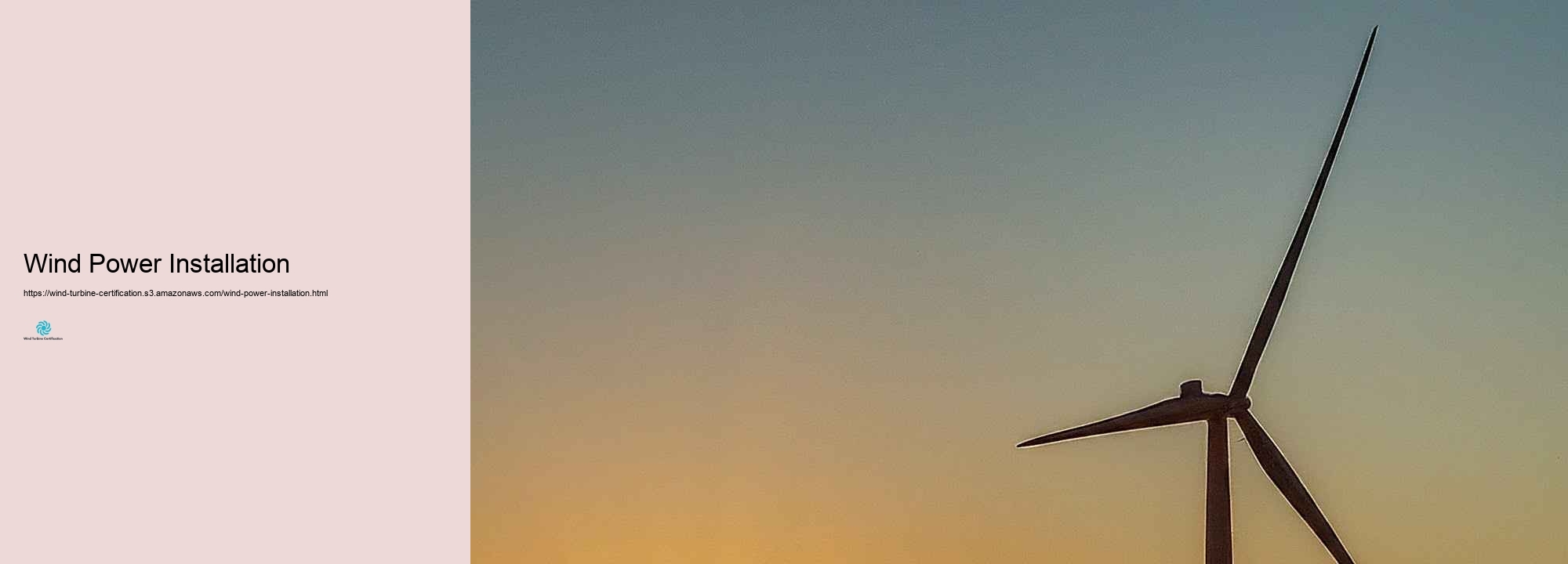
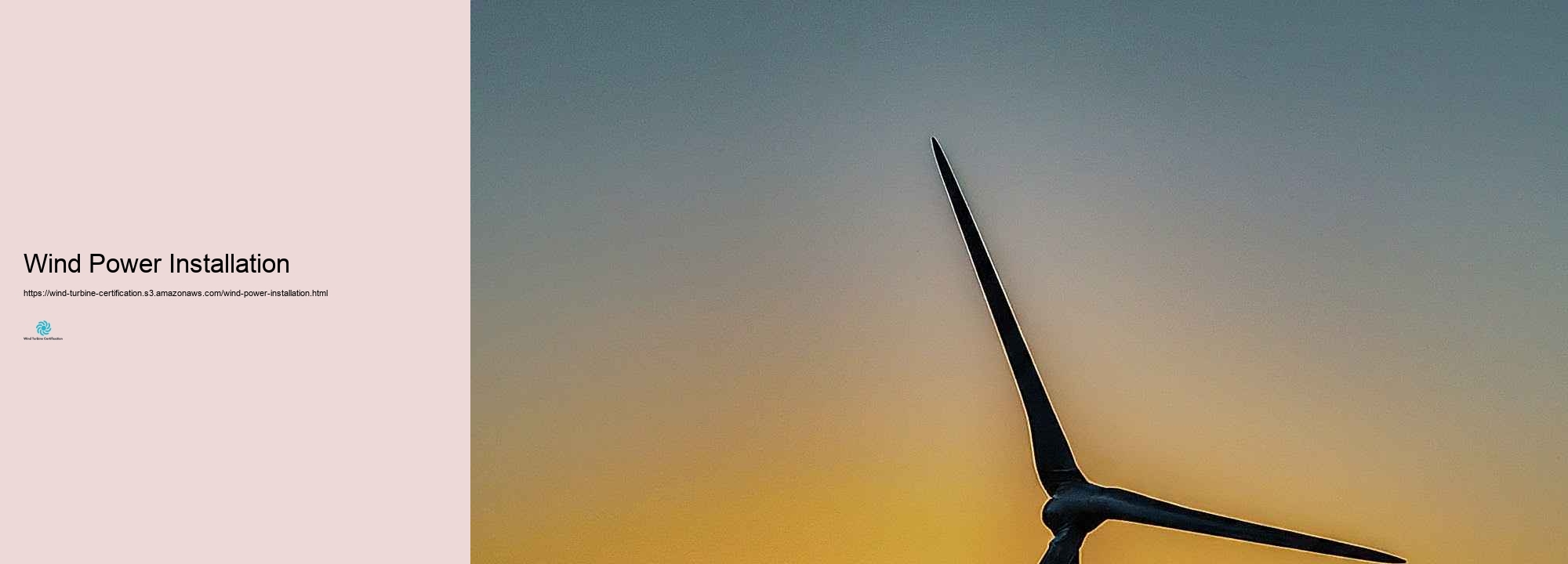
Wind turbine certification is an extensive treatment that guarantees wind turbines are made, made, and checked to meet specific needs and demands. This certification is crucial for manufacturers to show the quality, security and safety, and performance of their items. The process typically consists of countless vital steps, each playing a crucial feature in the general certification. The really initial step in the wind turbine certification procedure is the layout basis assessment. This initially phase consists of evaluating the necessary assumptions, requirements, and methods utilized in the turbine'' ' ' s layout. Certification bodies like TUV, DNV-GL, or Bureau Veritas analyze the layout basis to warranty it straightens with market criteria such as IEC 61400-22. This activity is important as it develops the structure for all succeeding assessments and assessments. Adhering to the layout basis assessment, the following activity is the design analysis. In this stage, the certification body confirms that the real layout of the wind turbine follows the approved format basis. This consists of a comprehensive assessment of all technological elements of the turbine, containing building components, electric systems, control systems, and safety and security characteristics. The layout analysis assurances that the turbine is in theory with the ability of withstanding the prepared for whole lots and operating problems throughout its desired lifetime. The manufacturing evaluation is the 3rd substantial activity in the certification process. This stage focuses on reviewing the quality control systems and making treatments utilized to create the wind turbine. Certification bodies conduct exams of manufacturing facilities and analyze excellent quality administration systems to ensure that the turbines are being generated regularly and based upon the certified layout. This step is essential for maintaining the stability of the turbine from layout to manufacturing. Type evaluating is possibly one of one of the most exhausting and visible element of the certification procedure. This activity entails a collection of location and laboratory examinations to verify the turbine's efficiency, safety and security, and dependability. Secret tests include power performance measurements, loads measurements, blade examinations, and acoustic sound assessments. These examinations are done on a model of the wind turbine version under certification. The outcomes of these examinations are vital in verifying the design computations and guaranteeing that the turbine performs as anticipated under countless running troubles. Part certification can be an added action in the process, particularly for critical components like transmissions, blades, or generators. This includes separate screening and certification of these elements, which can be particularly crucial for big or difficult turbine layouts. Aspect certification can help streamline the basic turbine certification procedure and deal additional guarantee of stability. The last assessment is the conclusion of all previous actions. In this phase, the certification body takes a look at all the data, test outcomes, and analyses from the earlier phases. They assess whether all requirements have been met and if any type of issues recognized throughout the procedure have in fact been appropriately addressed. If every little thing is appropriate, the certification body problems the final kind certification for the wind turbine version. It's necessary to note that certification doesn ' ' t end with the issuance of the kind certification. Lots of certification plans consist of specifications for routine surveillance and re-certification. This makes sure that the manufactured generators continue to meet the licensed style and top quality standards in time. Makers might call for to take on normal audits and possibly added evaluating to maintain their certification. For wind cattle ranch projects, there's regularly an additional activity of job certification. This requires examining exactly how the approved turbine versions will certainly do in the specific problems of a designated wind ranch website. Job certification thinks about variables like regional wind problems, surface, grid connection requirements, and framework designs. Throughout the certification procedure, clear communication in between the turbine manufacturer and the certification body is crucial. Routine conferences and development reviews help assurance that any kind of type of concerns are identified and addressed without delay, preventing hold-ups in the certification timeline. Producers should certainly be prepared to supply considerable documentation at each phase of the procedure. The timeline for wind turbine certification can vary considerably depending upon the complexity of the turbine style, the preparedness of the manufacturer, and the certain certification plan being complied with. It's not unusual for the whole procedure to take 12-18 months or perhaps a lot longer for new or intricate layouts. Expenses connected with certification can be substantial, including fees for the certification body, prices of prototype. model manufacturing for screening, and expenses pertaining to the various evaluations and analyses. Nevertheless, these prices are generally considered as a needed financial investment in the wind power market, as certification is typically a prerequisite for market access, job funding, and insurance coverage. It's worth remembering that various markets may have particular certification needs. While global requirements like IEC 61400-22 are extensively recognized, some countries or areas may have additional or revised needs. Providers opting for global markets requirement to be familiar with these versions and could requirement to obtain multiple qualifications. The certification procedure additionally plays an essential duty in the continuous improvement of wind turbine contemporary technology. The substantial testing and evaluation usually cause understandings that drive technology and boost turbine efficiency and honesty. This cycle of certification and improvement has been a crucial factor in the quickly growth of wind energy modern technology over the previous years. The wind turbine certification process is a considerable, multi-step journey that makes sure wind generators fulfill high requirements of security, performance, and reliability. From initial style evaluation through to last kind testing and certification, each activity plays a crucial duty in confirming the turbine's capacities.
While the procedure can be taxing and costly, it provides important assurance to stakeholders in the wind power market, from makers and programmers to plutocrats and regulatory authorities. As wind power continues to be to play a progressively necessary feature in the worldwide power mix, the rigorous certification treatment remains a structure of the industry advancement and success.
When it involves wind turbine professional credentials, numerous trusted firms provide programs that are widely recognized in the sector. These certification bodies play a vital duty in establishing and maintaining requirements for wind turbine specialists, guaranteeing they have the needed abilities and expertise to function securely and effectively in this swiftly growing field. One of one of the most well-known certification bodies is the American Wind Energy Organization (AWEA). The AWEA offers a considerable Wind Turbine Professional Certification program that is very related to in the market. This certification covers a big array of subjects, containing security procedures, electrical systems, mechanical systems, and hydraulics. The AWEA certification process frequently entails finishing a training program and passing a substantial evaluation. Countless companies in the wind power industry like or call for service professionals to hold this certification, making it a valuable credential for occupation advancement. One more well-respected certification body is the Worldwide Wind Organisation (GWO). While not specifically concentrated on expert certification, the GWO collections worldwide requirements for protection training in the wind market. Their Requirement Security Training (BST) program is commonly acknowledged and typically called for by companies. It covers essential capabilities such as emergency treatment, fire comprehending, working at elevations, and sea survival (for offshore wind specialists). Numerous wind turbine solution specialists go after GWO certifications together with their technological certifications to boost their employability and make certain they please market safety and security demands. The Electronics Service technicians Association (ETA) International is another firm that supplies ideal certifications for wind turbine service technicians. Their Renewable Energy Adaptation Expert certification is developed for technicians collaborating with numerous renewable energy systems, including wind generators. This certification shows a wide understanding of renewable energy technologies and their integration into electric systems, which can be especially valuable for professionals dealing with grid connection and power circulation facets of wind power jobs. The National Facility for Building And Building and construction Education and Research study (NCCER) offers a Wind Turbine Upkeep Professional certification program that is obtaining acknowledgment in the sector. This program covers a detailed series of skills and understanding areas particular to wind turbine upkeep, including safety and security, electrical theory, hydraulics, and mechanical systems. The NCCER certification process consists of both produced analyses and sensible efficiency assessments, ensuring that accredited solution professionals have both theoretical understanding and hands-on abilities. For those wishing to concentrate on the offshore wind industry, the Global Wind Organisation (GWO) offers certain credentials customized to the distinctive obstacles of taking care of offshore wind cattle ranches. These include innovative rescue training and specialized sea survival training programs. While not solely for specialists, these accreditations are generally called for or exceptionally valued for functions in offshore wind maintenance. The Work Safety and security And Safety and Health Management (OSHA) also plays a significant task in wind turbine service professional training and certification. While OSHA doesn't offer a certain wind turbine specialist certification, their security training programs, especially those concerning running at altitudes and electrical safety, are usually asked for or suggested for experts in the area. Numerous companies call for solution technicians to hold OSHA accreditations along with industry-specific certifications. In Europe, the European Wind Power Association (presently WindEurope )has contributed in developing needs and qualifications for the wind power market. While they wear 't right usage technician qualifications, their guidelines and requirements typically alert the internet material of training programs and qualifications made use of by other firms in Europe and beyond. The International Renewable Energy Company (IRENA) is one more international company that, while not using directly accreditations, supplies beneficial resources and guidelines for renewable resource professionals, containing wind turbine service specialists. Their operate in integrating job features and abilities needs across the renewable resource sector has actually impacted certification programs worldwide. It's worth keeping in mind that many location universities and technological schools offer wind turbine expert training programs that culminate in a certification or associate level. While these are not certifications in the traditional sense, they usually consist of preparation work for industry-recognized qualifications and can be an exceptional path into the location. For those considering an added scholastic approach, some colleges supply bachelor's degrees in renewable resource or wind power technology. These programs generally include possibilities to earn market accreditations as part of the curriculum, giving graduates with both theoretical comprehending and practical credentials. When picking a certification program, it's important for aspiring wind turbine service technicians to take into consideration the recognition of the certification body within the field, the certain capabilities and competence places covered by the certification, and the demands of potential firms in their target job market. Great deals of professionals locate that a combination of credentials from various bodies materials the most extensive credential bundle. It's also crucial to bear in mind that the wind energy market is swiftly developing, with brand-new advancements and approaches arising on a regular basis. For that reason, lots of certification bodies use proceeding education and learning programs or require routine recertification to see to it that experts capabilities continue to be current. This persisting finding out process is a necessary facet of an effective work in wind turbine maintenance. While there is no solitary, typically recognized certification body for wind turbine professionals, a number of companies deal really referred to programs that can substantially improve a specialist certifications and career prospects. The American Wind Power Organization, Global Wind Organisation, Electronics Technicians Organization, and National Center for Structure Education and Research are among the leading certification bodies in this area. Ambitious wind turbine professionals require to examine these companies and their certification programs carefully, considering their profession purposes and the particular demands of their target employers or locations. By acquiring credentials from respected bodies and devoting to continuous education and ability development, wind turbine professionals can setting themselves for success in this vibrant and broadening market.
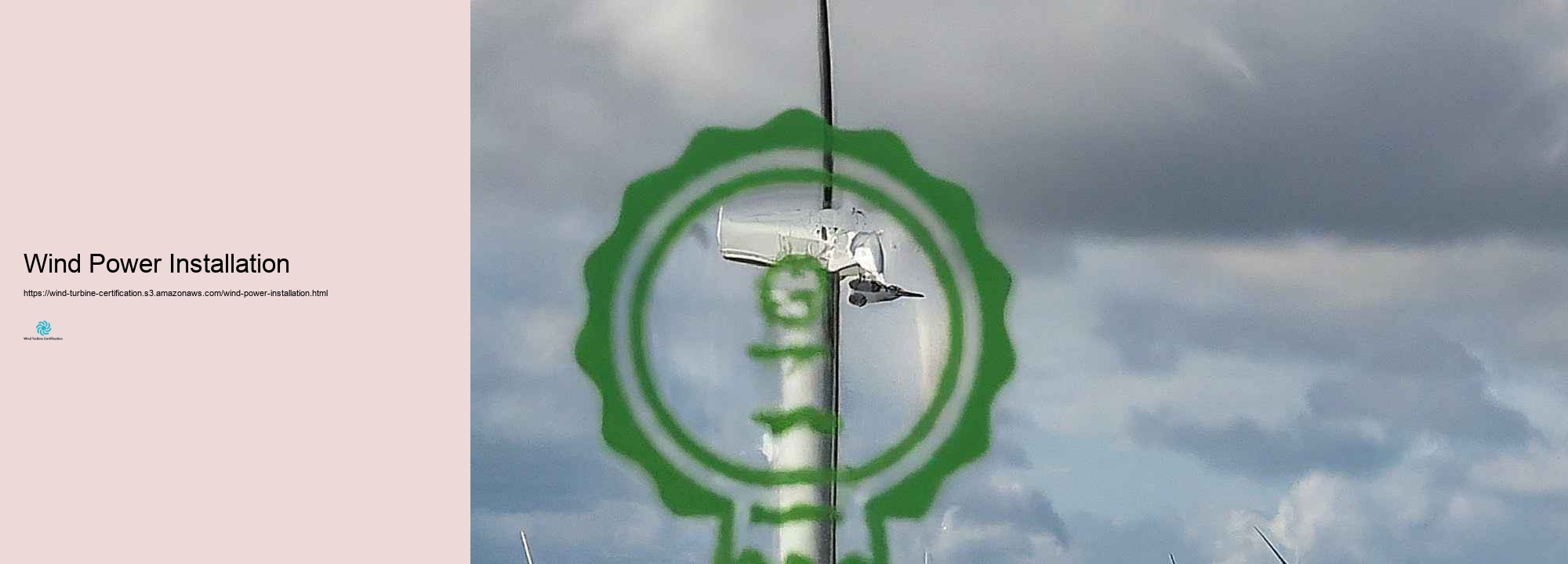
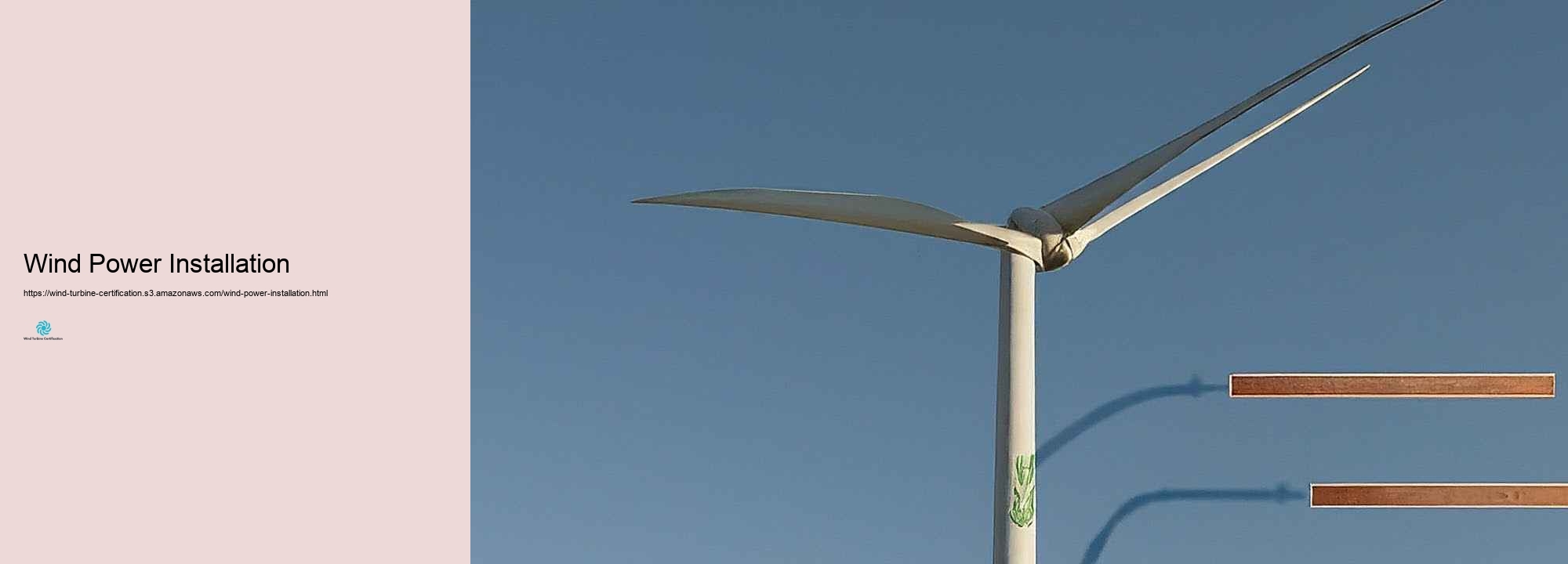
Wind turbine certification plays an essential responsibility in ensuring the safety and protection and conformity of wind power systems, adding considerably to the sector growth and public authorization. This complete treatment incorporates various components of wind turbine style, manufacturing, and treatment, all targeted at lessening hazards and making best use of efficiency in the testing setups where these structures are launched. At its core, wind turbine certification concerns validating that a turbine satisfies certain standards and requirements recognized by regulative bodies and sector companies. These requirements cover a substantial range of components, consisting of architectural integrity, electrical systems, control systems, and environmental influence. By sticking to these criteria, vendors and drivers can show their devotion to safety and security and security and reliability, which is crucial for getting the depend on fund of capitalists, insurance providers, and the public. Among the major focuses of wind turbine certification is architectural safety and security. Wind wind turbines are revealed to extreme climate condition and should take on high winds, disturbance, and in many cases, seismic activity. Certification treatments include considerable screening and examination of the turbine's building parts, such as the tower, nacelle, and blades. These examinations simulate countless heaps issues that the turbine may experience throughout its functional life time, making sure that it can sustain these forces without failing. Blade certification is a particularly vital aspect of this process. Wind turbine blades are subject to significant anxieties and need to maintain their stability over countless cycles. Certification for blades requires both static and dynamic tons testing, in addition to tiredness testing to reproduce long-lasting usage. Advanced techniques such as ultrasonic scanning and acoustic discharge testing are usually used to determine any type of indoor problems or weaknesses in the blade structure. Electrical system certification is another critical element of wind turbine security and safety and security. This contains evaluating the generator, power electronics, and grid link systems to assurance they accomplish safety and security standards and can operate reliably under different problems. Certification around likewise attends to problems such as electro-magnetic compatibility, ' security versus lightning strikes, and the capability to safely fold the turbine in case of grid failings or numerous other emergency situation situations. Control system certification concentrates on the software application and devices that take care of the turbine's procedure. This includes examining the turbine ' s capability to respond to changing wind problems, keep maximum power outcome, and execute security approaches when required. Certification around typically includes significant screening of the control formulas under many alternative scenarios to ensure resilient and dependable efficiency. Ecological conformity is a gradually critical facet of wind turbine certification. This includes analyzing the turbine's audio discharges, darkness flicker effects, and possible impact on wildlife, particularly birds and bats. Certification processes around aid make certain that wind wind turbines can exist side-by-side sympathetically with their surrounding environment and satisfy area plans referring to environmental protection. For offshore wind generators, certification manages extra dimensions as a result of the severe marine setting.
The wind power field has really expanded significantly over the previous couple of years, driven by the increasing demand for renewable energy sources. As the market expands, the value of making sure safety, stability, and performance of wind wind turbines has wound up being paramount. International certification bodies play a crucial duty in this treatment by establishing and imposing requirements that warranty the excellent quality and safety of wind wind turbines. This post discovers the important worldwide certification bodies related to the wind power market and their responsibilities in making sure compliance with worldwide criteria. The Global Wind Organisation (GWO) is a non-profit sector company started by leading wind turbine manufacturers and operators. GWO's crucial unbiased is to attain an injury-free workplace in the wind turbine industry with the release of usual international requirements for security and security training and emergency circumstance treatments. GWO requirements are created by the industry, for the sector, making certain that they are useful and trustworthy in boosting security and security and sustaining labor force development. GWO offers various training requirements, consisting of Fundamental Safety and security and safety Training( BST), Basic Technical Training(BTT), and Advanced Rescue Training(ART ). These needs are produced to make sure that wind turbine experts have the important skills and proficiency to implement their jobs safely and successfully. Certification bodies like NSF International Strategic Registrations (NSF-ISR) and ClassNK supply GWO certification to training vendors, guaranteeing that they satisfy the required needs and make use of perfect devices in an ideal environment. UL Solutions is an added famous certification body in the wind power area, recognized globally for its experience in security scientific research. UL Solutions gives certifications for offshore wandering wind generators, which are ending up being significantly essential as the market moves in the direction of much deeper waters. Their certification solutions consist of kind certification, element certification, and grid code consistency certification. These accreditations validate that wind generators are produced, taped, and made in uniformity with certain standards and website problems, assuring security and protection, integrity, and efficiency. UL Solutions furthermore uses turbine life development services, assisting proprietors make alerted selections worrying procedures, upkeep, and fixing to make the most of the worth of running wind homes. Their participation in various nationwide and global boards much more emphasizes their commitment to forming the future of wind power through a lot more secure and a lot more safe development. ClassNK is a reputable certification body that offers services based upon the worldwide training requirements created by GWO. ClassNK offers certification for training suppliers based upon all GWO training standards, including BST, BTT, ART, and specialized courses like Blade Repair work Training. Licensed training carriers ought to undergo annual keeping track of audits and recertification audits every 2 years to maintain their certification. This rigorous process makes certain that training fulfills the biggest criteria, contributing to a much safer and a lot more knowledgeable labor force in the wind turbine market. NSF-ISR is just one of the extremely initially North American certification bodies to supply GWO certification to training companies. Their auditors are specialists in the wind turbine field and can prepare for concerns that may influence the audit experience. Certification shows that training service providers conduct training according to GWO demands utilizing the called for tools in a suitable establishing. Certified training suppliers are offered on the WINDA data source, supplying exposure to wind turbine proprietor operators, makers, and sector specialists seeking training organizations. International certification bodies play an important function in making certain compliance with worldwide criteria in the wind power sector. They develop and apply strenuous criteria that cover various elements of wind turbine layout, manufacturing, installment, and procedure. These requirements ensure that wind generators are secure, dependable, and do efficiently under various environmental problems. For instance, kind certification confirms that a wind turbine kind is created, videotaped, and made in consistency with details standards and web site issues. Part certification puts on significant building, mechanical, and electric elements of wind generators, confirming that they satisfy proper criteria and technical requirements. Grid code compliance certification ensures that wind generators satisfy nationwide and international grid codes, advertising their assimilation right into power systems. Amongst the essential features of global certification bodies is marketing security within the wind turbine sector. By setting common international criteria for safety training and emergency situation treatments, these bodies assistance in lowering the risk of injuries and casualties among wind turbine professionals. As an instance, GWO's BST contains components such as emergency treatment, hand-operated handling, fire recognition, operating at elevation, and sea survival. These modules equip service technicians with essential capacities to manage emergencies successfully. Certification bodies similarly maintain labor force innovation by systematizing entry-level training throughout the market. This standardization help ensure that brand-new technicians have a constant degree of knowledge and skills, which is vital for maintaining high security standards and useful efficiency. Numerous GWO individuals have common 30 % or a lot more of their entry-level training, demonstrating the effect of these standards on labor force advancement. Worldwide certification bodies help with market ease of access for wind turbine producers by providing recognized accreditations that are approved worldwide. UL Solutions accreditations, for instance, are acknowledged by regulating bodies worldwide, enabling suppliers to accessibility globally markets extra conveniently. This acknowledgment increases the rate to market for new wind turbine technologies, adding to the growth of the renewable energy sector.Global certification bodies such as GWO, UL Solutions, ClassNK, and NSF-ISR play a crucial function in making certain consistency with global requirements in the wind power market. By developing extensive standards for protection training, component top quality, and grid adaptation, these bodies advertise safety and safety and security, honesty, and performance in wind generators. Wind Power Installation Their credentials increase market availability for producers while supporting workforce development through typical training programs. As the wind power sector continues to progress, the obligation of these certification bodies will definitely remain to be vital in driving technology and making sure that renewable energy technologies satisfy the best requirements of safety and efficiency.
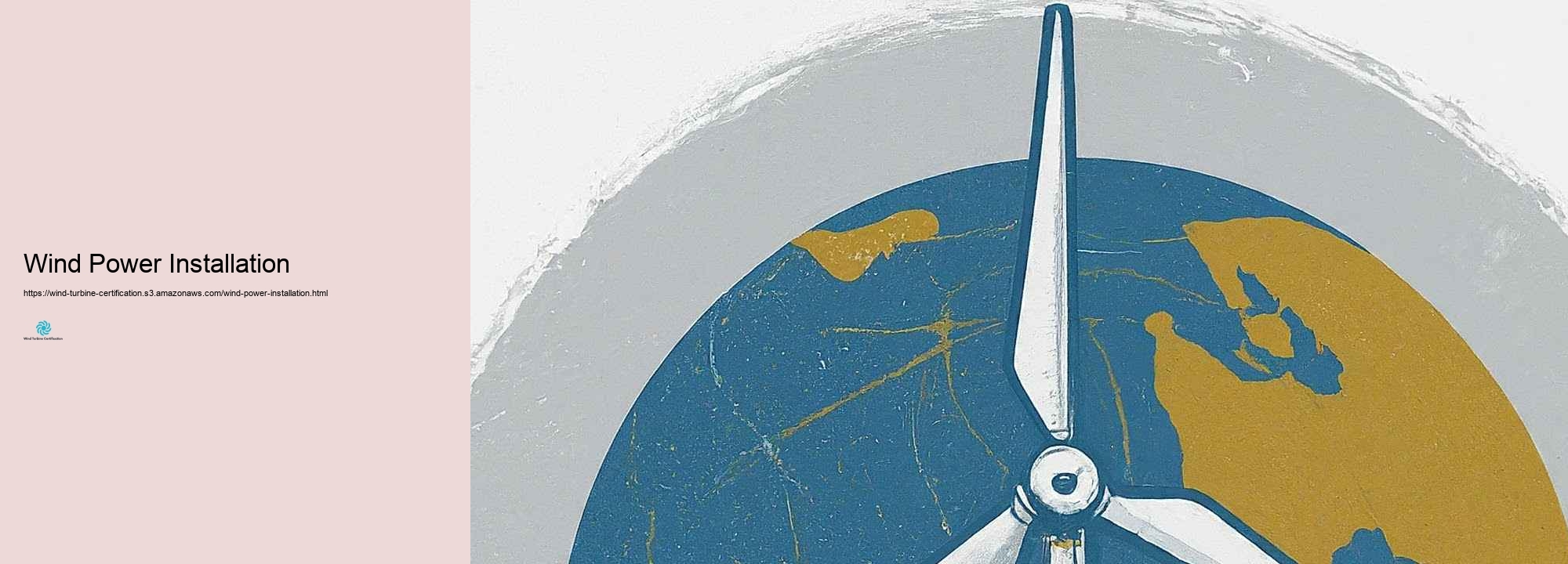
Wind Turbine Certification is a formal recognition that a technician or wind turbine system meets specific industry standards. It ensures safety, efficiency, and compliance with regulations, which is crucial for operating within the renewable energy sector.
Basic requirements include completing relevant training, gaining hands-on experience, and passing exams that test knowledge of wind turbine systems, safety protocols, and operational procedures.
The time required to become certified varies, typically ranging from a few months to over a year, depending on the program and the individual's prior experience.
Organizations such as the Global Wind Organisation (GWO), American Wind Energy Association (AWEA), and International Electrotechnical Commission (IEC) provide Wind Turbine Certification.
Obtaining Wind Turbine Certification enhances your credibility as a professional, opens up job opportunities in the wind energy sector, and ensures you are equipped to meet industry standards and safety requirements.